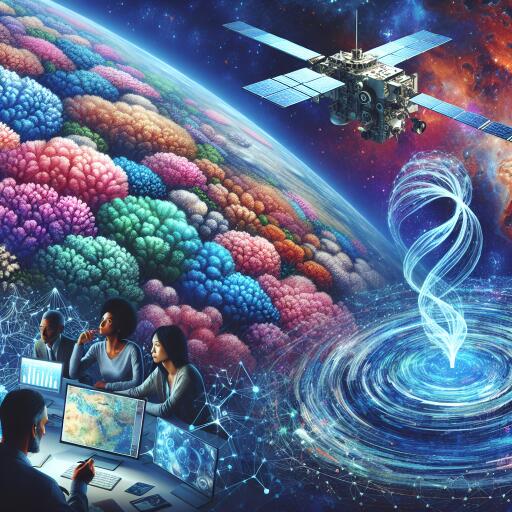
Revolutionizing Reef Biodiversity Analysis Through Satellite Technology
Innovations in satellite technology are transforming how scientists study ecological habitats, offering new ways to interpret the wealth of data these tools provide. At the forefront of this scientific adventure is a remarkable endeavor to harness satellite imagery for assessing the biodiversity of the world’s coral reefs. As these underwater ecosystems face increasing threats, understanding their biodiversity has never been more critical.
Traditionally, gathering data on reef biodiversity has been a labor-intensive process, relying heavily on SCUBA-diving surveys that are both costly and time-consuming. However, a team of researchers has embarked on a groundbreaking study that leverages remote sensing technology to create detailed habitat maps on a global scale, offering a new perspective on reef biodiversity.
The research drew on a vast database of diversity measurements for reef fish and coral species, compiled from SCUBA diver surveys conducted by a comprehensive global reef expedition. This expedition charted reefs across the Pacific, Atlantic, and Indian Oceans, covering a significant portion of the planet’s shallow-water tropical coral reefs. With this information in hand, the scientists sought to understand the relationship between the intricacy of seabed habitats and the variety of life they support.
Their findings reveal a strong correlation between the complexity of seabed patterns and the biodiversity of the residing organisms, consistent across different ocean basins. This discovery underscores the potential of using satellite-derived habitat maps as a reliable indicator—or proxy—for the biodiversity of coral reefs.
Lead researchers highlighted the transformative potential of this approach, noting that it enables the assessment of reef biodiversity from space, at a global scale. This technological leap could significantly enhance our capacity to identify and protect high-biodiversity reefs, informing marine spatial planning and the establishment of marine protected areas.
The implications of this research extend well beyond conservational efforts. By providing a scalable and cost-effective alternative to traditional biodiversity surveys, satellite imagery could democratize access to critical ecological data, empowering researchers and conservationists across the globe. This, in turn, may accelerate efforts to safeguard the rich biological tapestry of coral reefs, which are vital to the health of our oceans and the planet as a whole.
Published in a leading environmental remote sensing journal, the study’s findings have ignited hope and excitement among environmental scientists and marine conservationists. By showcasing how satellite technology can predict coral reef biodiversity, the research paves the way for innovative conservation strategies aimed at preserving these ecosystems for future generations.
As we continue to hone our understanding and application of remote sensing technology, it’s clear that we are on the cusp of a new era in ecological monitoring. Satellite imagery promises not only to broaden our scientific horizons but also to enhance our ability to protect the natural world. In the face of mounting environmental challenges, this represents a beacon of hope and a testament to human ingenuity.





Leave a Reply